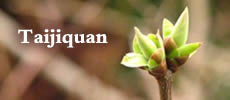XINGYIQUAN
Xingyiquan features aggressive shocking attacks and direct footwork. The linear nature of Xingyiquan hints at both the military origins and the influence of spear technique alluded to in its mythology. Despite its hard, angular appearance, cultivating "soft" internal strength or qi is essential to achieving power in Xingyiquan.
The goal of the Xingyiquan fighter is to reach the opponent quickly and drive powerfully through them in a single burst ¡ª the analogy with spear fighting is useful here. This is achieved by coordinating one's body as a single unit and the intense focusing of one's qi.
Efficiency and economy of movement are the qualities of a Xingyiquan fighter and its direct fighting philosophy advocates simultaneous attack and defence. There are few kicks except for extremely low foot kicks (which avoids the hazards of balance involved with higher kicks) and some mid-level kicks, and techniques are prized for their deadliness rather than aesthetic value. Xingyiquan favours a high stance called Santishi, literally "three bodies power," referring to how the stance holds the head, torso and feet along the same vertical plane. A common saying of Xingyiquan is that "the hands do not leave the heart and the elbows do not leave the ribs." Another characteristic common to many styles of XingYi is a stance called "Dragon Body". This is a forward stance similar to a bow stance with a straight line from the head to the heel of the back foot and the front foot perpendicular to the ground. This is not so much a separate stance or technique in itself as a principle of movement to provide power to techniques.
The use of the Santishi as the main stance and training method originated from Li Luoneng's branch of Xingyi. Early branches such as Dai family style do not use Santi as the primary stance nor as a training method.



